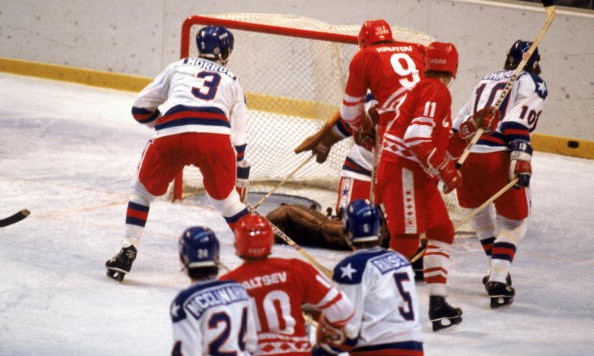Sunday, February 8 at 9:00 Eastern, ESPN will air only its second hockey-related 30 for 30, Of Miracles and Men. Awful Announcing reviewed it here and had great things to say about the film. Sports fans in general will appreciate the story, but hockey fans in particular will find lessons in the telling of the Soviet Union’s side of the story. I was able to procure an advance copy of the film; here are some hockey takeaways:
- Once upon a time, statistics like assists would have been considered an “advanced stat.” Of course, these days hockey has moved on to metrics like Corsi and Fenwick. However, Anatoli Tarasov, the Godfather of Russian Hockey, could just as well be called the Godfather of Hockey Analytics. He had never seen a game of hockey before he was appointed director of the Soviet Union’s hockey program, but he learned quickly the value of puck possession. Instead of counting shot attempts, as modern analysts do, Tarasov counted completed passes. He found that often, the team which completed the most passes won the game.
- Tarasov also calculated that the Soviet Union’s style should be centered around the movement of the players who didn’t have the puck, instead of the other way around. That way, as he said, “One man depends on four instead of four men depending on one.”
- Russian hockey essentially began as a game called bandy, which was played on a rink the size of a soccer field. Whereas North American hockey was influenced by rugby, European hockey incorporated more elements of soccer. Today, hockey broadcasters and writers call European players “soft” or “averse to contact.” The roots of each style of game might explain why.
- As Jeff Marek pointed out on Wednesday’s Marek vs. Wyshynski podcast, the Soviets would attempt to enter the offensive zone and if there wasn’t a play to be made at the opponent’s blue line, they’d circle back and try again. They did not dump and chase; instead, they maintained possession of the puck. We see the “circle back” strategy in four-on-four situations in the modern NHL, but we don’t see it nearly enough. Zone entries are one of the next frontiers of hockey analytics, now that we’ve begun to understand the value of possession. And we owe much of it to the Russians.
- Canada’s victory in the 1972 Summit Series might actually have been a detriment to the development of Canadian hockey. It affirmed Canada’s long-held belief that its physical, dump-and-chase, fight-filled style was superior while hockey in Europe was advancing.
Of Miracles and Men is a fantastic film for sports fans, but particularly for hockey fans who are curious about the roots of hockey analytics. Blogger Vic Ferrari and others are sometimes considered the genesis of the analytics movement. But when even the New Yorker is using terms like “Soviet-style puck possession,” Anatoli Tarasov and the Soviet Union’s contributions to analytics are beyond question.

